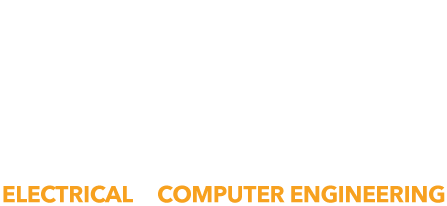ECE Seminar Series: Crystalline Oxides for Emerging Microelectronic Devices
ECE Seminar Spring 2019
April 16, 2pm-3pm, ITE 401
Crystalline Oxides for Emerging Microelectronic Devices
Maruf Amin Bhuiyan
Yale University
Abstract:
Crystalline oxides are traditionally used for niche applications like thin film transistors, and also for basic scientific studies because of the rich physics they invoke. Recently, the availability of native bulk substrate of a semiconducting crystalline oxide, and the successful synthesis of crystalline-oxide insulators by the atomic layer deposition (ALD) process have opened horizons for these pristine materials to be used in various frontiers of microelectronic technologies, ranging from power electronics to memory applications.
Of the crystalline oxides studied, β-gallium oxide (β-Ga2O3) is a promising semiconducting crystalline oxide for future generations of power electronic devices; ALD grown crystalline magnesium-calcium-oxide (Mg0.25Ca0.75O) and lanthanum oxide (La2O3) have found their applications as high-quality gate dielectrics for gallium-nitride-based (GaN) and gallium-arsenide-based (GaAs) transistors, respectively; on the other hand, polycrystalline hafnium oxides have created a revolution in the field of ferroelectric memory.
This work focusses on electrical characterization of capacitors and transistors based on the aforementioned four types of crystalline oxides. Charge trapping during device operation is one major reliability concern. Significant efforts have been made to understand the charge trapping characteristics of crystalline-oxide-based devices. To reveal the trap characteristics, measurement techniques like constant-voltage stress, constant-current stress, and AC transconductance dispersion methods have been employed.
The potential of using crystalline-oxide-based devices in radiation rich environments, like outer space and high energy particle accelerators, have also been investigated. Radiation-induced damage can also be induced by CMOS chip processing, particularly in advanced technology nodes where extreme UV lithography is employed for patterning. Current-voltage, capacitance-voltage, and gate leakage measurements have been carried out to investigate the impact of total ionizing dose of X-ray radiation on the crystalline-oxide-based device performance. Process improvements and device architecture modifications have been made to improve the radiation hardness of these devices.
Short bio: Maruf is currently working under Professor T. P. Ma in the Electrical Engineering Department at Yale University. He obtained his B. Eng. from National University of Singapore (NUS) and M.S. & M. Phil. from Yale University. He is en-route to Ph.D. degree for May 2019, after which he will join IBM Research. His research works primarily involve fabrication and characterization of MOS devices tailored for high power and radiation harsh environment. He has several peer reviewed publications in journals like IEEE transactions, IEEE Electron Device Letters, Applied Physics Letters and presented in international conferences like IEEE Nuclear and Space Radiation Effects (NSREC) and IEEE Semiconductor Interface Specialist Conference (SISC). He has won awards including IBM PhD Fellowship and Yale Graduate Fellowship.
Categories: Seminars
Published: April 16, 2019
Available Archives


